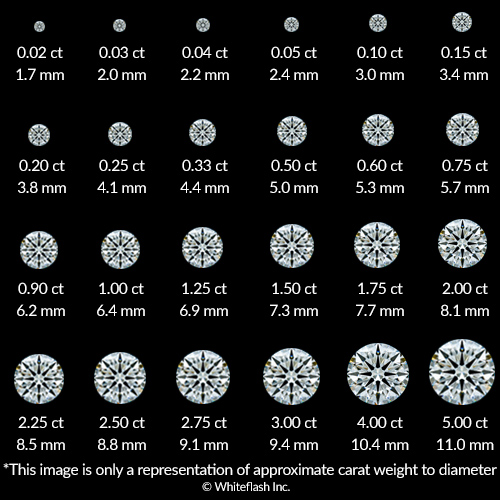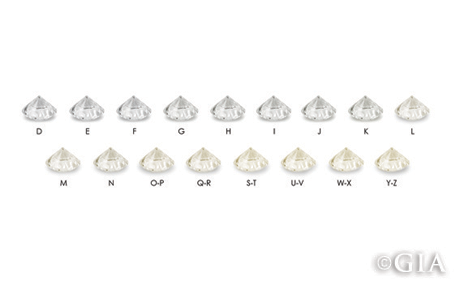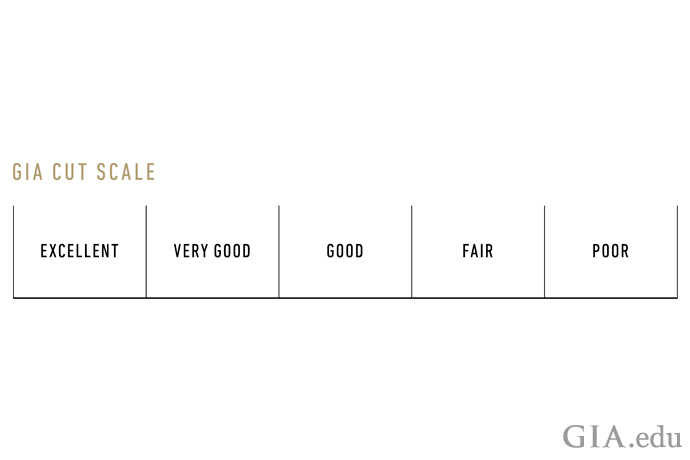This page contains references to diamonds or engagement rings from different companies. Sometimes I do receive a commission when you click on links and buy the products.
When it comes to choosing a carat weight for your diamond ring, there are certain weights that buyers highly covet. The average carat weight for a diamond ring varies from country to country, state to state and even city to city. Generally speaking, a diamond around 1.00ct continues to be the most popular weight for a natural diamond ring, however, buyers continue to pursue their dreams of a dazzling 3.00ct diamond and this carat weight is highly desirable for those looking for a diamond with a big impact.
Choosing a 3 diamond for your ring brings about a different set of guidelines than lower carat weights as well as very different advice when it comes to price. If you are in the market for a 3.00ct diamond, this article will help you make informed choices and ultimately find the diamond of your dreams.
What is Carat Weight?
Let’s start with the basics. The measurement used to express the weight of a diamond is carat. One carat is equivalent to around 200 milligrams (0.20 grams). The term is taken from the word carob, referring to the seeds of the locust tree. Due to their fairly uniform size and weight, jewel traders would use the carob seeds as counterweights against the gemstones. The modern system is much more precise, with 0.20g = 1.00ct now being the standardized weight across the globe.
Carat weight is usually expressed to two decimal places (e.g. 1.25ct) and each carat is made up of 100 points. For example, you made hear a 0.50ct diamond being referred to as a ‘fifty-point diamond’; this is because it has 50 out of the total 100 points that make up a full carat. It may also be referred to simply as ‘half a carat’.

Image courtesy Whiteflash.com
It is a popular misconception that carat refers to the size of a diamond. This is not the case. The carat only expresses the weight of the diamond. The ‘size’ is expressed on a diamond certificate by the dimensions across the surface of the diamond and from the table to the point. It is possible to gauge a rough idea of how big a diamond will look by the carat weight, however, different shapes and cuts will give entirely different proportions. For example, Marquis and oval-shaped diamonds at 3.00ct will look larger than a 3.00ct round brilliant diamond, as they have a larger surface area giving the impression of a larger diamond.
I Want a Big Diamond!
When it comes to diamonds, quality should always take precedence over carat weight and size. However, if you want to maximize upon the appearance of a three-carat diamond ring, there are a few tips that will help you find a knockout:
- Get a good cut. A well-cut diamond will allow for optimum light return which will make the most of every facet and have your diamond sparkling from all angles. If you sacrifice cut quality, a diamond may be too shallow or too deep. Either way, it will result in a smaller-looking diamond. Learn more about diamond imaging and videos here.
- Consider a different shape. If size is what really matters, you may consider straying from the traditional round brilliant and princess cuts. Marquise, pear and oval shaped diamonds all have larger surface areas which makes them appear bigger.
- Certain settings will also make a diamond appear larger. Prong settings with small claws and halo designs will all help with the impact of your ring.
A three-carat diamond is significant on the hand, so don’t be tempted to drop quality in favor of size. Another option is to consider lab-grown diamonds.
3 Carat Lab Grown Diamonds
Lab-grown diamonds have surged in popularity over recent years, offering an ethically-sourced, environmentally-friendly, and often more affordable alternative to their mined counterparts. When considering a sizable gem like a 3 carat, it’s important to make informed decisions.
- Light Performance Images: One of the significant advantages of purchasing diamonds today is the ability to view light performance images. These photos, often available from online retailers, show how a diamond handles light, which is crucial for understanding its brilliance, fire, and scintillation. Ensure that the diamond you’re considering comes with these images, allowing you to gauge its overall sparkle and appeal.
- Certification: As with all diamonds, certification for lab-grown stones is crucial. The International Gemological Institute (IGI) and the Gemological Institute of America (GIA) are two renowned certification bodies. They verify the diamond’s attributes, including its carat weight, color, clarity, and cut. While IGI is widely recognized for certifying lab-grown diamonds, GIA has also started to grade them. Always ensure that your 3 carat lab-grown diamond comes with a certificate from a reputable agency.
Tips for Buying:
- Value for Money: Generally, lab-grown diamonds cost 70-80% less than mined diamonds of the same quality. Ensure you’re getting a fair deal by comparing prices and understanding market trends.
- Clarity and Color: Given the larger surface of a 3-carat diamond, inclusions and color differences may be more visible. Opt for a stone with higher clarity (VS2+) and a desirable color grade (H+) to ensure it appears beautiful to the naked eye.
- Setting Matters: A 3-carat diamond is a statement piece. Choose a setting that not only secures the stone but also complements its size. A robust setting like a four-prong or bezel setting is often recommended.
Is a Three-Carat Diamond Expensive?
The cost of a diamond is calculated by price per carat. The diamond prices per carat also increase with higher weight categories. For example, a 2.00ct diamond may be priced at $8,400 per carat, while a similar 3.00ct diamond may be priced at $10,960 per carat. In the past, buyers have been told to ‘buy shy’. This means buying just shy of a full carat to avoid the jump in price per carat. However, the increased number of people doing this combined with the ever-improving skills of diamond cutters means that this technique sometimes won’t save you money. You can read more about weight categories and price per carat here.
Like diamonds of all carat weights, the cost of a 3.00ct diamond is heavily dependant upon matters of certification and quality. To find a beautiful 3.00ct diamond you must abandon ideas of ‘bang for your buck’. Some people want a big diamond, and that is okay, but know that in a diamond of this weight, flaws and yellow tints are even more obvious and can have a detrimental impact on the beauty of the stone.
Before we break down price, we must first look at the 4C’s.
3.00ct Diamond: Clarity
 A clarity grade is given based upon the amount/absence of inclusions and blemishes within the diamond and upon the surface. The GIA grades clarity as follows:
A clarity grade is given based upon the amount/absence of inclusions and blemishes within the diamond and upon the surface. The GIA grades clarity as follows:
- Flawless (FL) – No inclusions or blemishes are visible to a skilled grader using 10× magnification
- Internally Flawless (IF) – No inclusions and only blemishes are visible to a skilled grader using 10× magnification
- Very, Very Slightly Included (VVS1 and VVS2) – Inclusions are difficult for a skilled grader to see under 10× magnification
- Very Slightly Included (VS1 and VS2) – Inclusions are minor and range from difficult to somewhat easy for a skilled grader to see under 10x magnification
- Slightly Included (SI1 and SI2) – Inclusions are noticeable to a skilled grader under 10x magnification
- Included (I1, I2, and I3) – Inclusions are obvious under 10× magnification and may affect transparency and brilliance
Choosing the right clarity grade for a 3.00ct diamond goes beyond a GIA grading. The bigger the diamond, the more obvious these imperfections will be and so it is essential to view the diamond by eye or using high-res imaging and videos to really understand the impact of these birthmarks.
A flawless diamond is incredibly rare and therefore incredibly expensive; however, it is possible to find beautiful, eye-clean diamonds at lower grades that will deliver the fire and brilliance you desire from your 3.00ct diamond. Being able to view your diamond in the best possible conditions (i.e. through high-res imaging) and selecting an eye clean diamond at a lower grade can save you thousands of pounds.
I recommend setting your search for a VS2 grade diamond. This offers the perfect balance between price and quality, providing that the diamond is eye clean. If you are trying to get to grips with viewing diamonds for inclusions, take a look at the James Allen website. Their imaging is by far the most clear and accurate, making it a great place to start your search. This 3.10ct E-VS2 round brilliant diamond listed on the James Allen website shows how important viewing a diamond is. You can see several inclusions in the table of the diamond – these would impact on sparkle and light return. A grade does not tell you everything when it comes to clarity.
3:00ct Diamond Color

The above chart from the GIA shows their color gradings; in truth, most people find the subtle distinctions between each grade almost impossible to identify. They can however, have a huge impact on price. As the quality grades creep lower, the chances of seeing a flash of yellow or brown across a diamond increase. A 3.00ct diamond is going to have a large surface area meaning that these yellow or brown hues will be much more obvious than they would be in a smaller diamond.
However, this doesn’t have to mean selecting a D in color. Just like choosing a clarity grade, you will need to use your discerning eyes and diamond knowledge to find the balance between price and beauty.

This screenshot from James Allen shows three diamonds with a G color grading next to a diamond with an L color grading. The difference in price is huge, but as this image shows, so it the difference in quality. A strong, brownish tint can be seen in the L graded diamond. This would be visible by eye and would be an unsuitable grade choice for a diamond of this size. Those brown and yellow tones diminish the sparkle and fire of the diamond, causing it to appear dull and discoloured.
Your choice of setting can go some way towards making a diamond looking whiter. Warmer settings such as 18k rose or yellow gold allow you to be a little more flexible, while white metals like platinum and white gold will cause color in the diamond to present itself more obviously.
For a 3.00ct diamond, you need to be looking at grades from G-I in order to ensure a colorless looking diamond. For white metals, it is likely you will need a G, while for warmer tone metals, you may find an H/I graded diamond which still appears colorless.
3.00ct Diamond Cut

Often considered the most important of the Four C’s, the cut of the diamond will dictate how effectively your diamond handles light. These light handling abilities translate into the scintillation, brilliance and fire in a diamond. Different diamond shapes have different cut requirements and they each require an expert diamond cutter who understands how their facets should be cut to maximise their unique properties.
When it comes to getting the best cut, there is one company who stands head and shoulder above the rest. Whiteflash’s in-house A CUT ABOVE® range holds some of the best performing diamonds on the market. Their stringent parameters go above and beyond the GIA grading system, with only a tiny portion of diamonds holding the ‘A CUT ABOVE’ title. This 3.066ct H-VS2 round brilliant diamond from their in-house collection is a stunning example of an expertly cut diamond. A cut like this would give an abundance of sparkle and give you the most from your diamond.

Cut is one of the more complex factors in diamond buying but Whiteflash provide you with additional light performance images and videos which can help you get to grips with the more challenging aspects of a diamond.
The bottom line when it comes to cut is always go for the absolute best that your budget allows and aim for a GIA ‘Excellent’ as a minimum. You can make small sacrifices elsewhere to find a diamond within your budget, but sacrificing cut quality will have a dramatic impact on the overall appearance of your diamond.
How Much is a 3 Carat Diamond?
The price of a 3.00ct diamond ranges from $15,000 (do not trust any vendor selling a 3.00ct diamond at this price, there is simply no way it is of acceptable quality), right up to $90,000. Cut quality, color, clarity, certification, diamond shape and where you buy from will all impact on the price.
For those working to a modest budget, try Blue Nile. They have a huge catalog of beautifully made rings at various price points but they won’t have the same quality of cut.
For the best balance, consider a 2.9 carat diamond – being just under the 3 carat mark will save you a lot of money.
When shopping online, it’s vital that you are able to compare diamonds effectively. Below is a chart of which diamond performance images each major vendor provides:
| Whiteflash | Blue Nile | James Allen | Brilliant Earth | Ritani | |
|---|---|---|---|---|---|
| HD Video Imaging |
✓ |
✓ |
✓ |
✕ |
✓(only on request) |
| Diamond Image |
✓ |
✕ |
✕ |
✕ |
✓(only on request) |
| Ideal Scope |
✓ |
✕ |
✕ |
✕ |
✕ |
| Hearts & Arrows |
✓ |
✕ |
✕(only on some diamonds) |
✕ |
✕ |
| Sarine Report |
✓ |
✕ |
✕ |
✕ |
✕ |
| ASET Map |
✓ |
✕ |
✕ |
✕ |
✕ |
3 Carat Diamond Price: Buying from a Store
When it comes to buying from a traditional jewelry store, you are likely to encounter some obstacles when shopping for a 3.00ct diamond. The first of these is a general problem across the board; the premiums. If you shop in a brick-and-mortar store, you will pay a premium on your diamond. This added cost covers the overheads of running the shop, but in some cases, it is unreasonable and excessive.
The second issue is inventory. Good quality, three carat diamonds are hard to come by and jewelry stores have small inventories. Imagine how much it would cost a store to buy in the thousands of diamonds listed on Blue Nile? It would be impossible.
This means that your choices will be limited and there is a high chance that the diamond will already be set in a ring. There is nothing wrong with buying a pre-set ring, however it makes it more difficult to take a good look at the diamond and any potential flaws that it may have. It also restricts you when it comes to the style of the ring.
Pinning down exact prices for diamonds of this size from traditional retailers is tricky, as they simply do not hold big collections of larger diamonds, but you can expect to pay a minimum of 15% above an online price.
Getting the Best Value from Your Three Carat Ring
There is no such thing as a cheap diamond, only a low-quality diamond with a price tag that is likely to still be inflated. If you are in the market for a three-carat diamond ring, it is important to set a realistic budget. Conduct your own price comparisons using the online vendors and begin to build an idea of what is going to work best for you. Following the guidelines below will ensure you get the most for your money:
Certification: Only consider diamonds with a GIA or IGI certificate for labs. These are the only internationally recognised certification labs and have set the industry standard for grading diamonds. If you are offered a diamond with any other certificate it is likely to have inflated grades and you will pay over the odds for a poorer quality diamond.
Color: Remember that the setting will also affect how colorless the diamond appears. For warmer settings (yellow and rose gold) a H-I will appear colorless. For white settings (white gold and platinum) a G-H would be suitable. When you go to G and above, the differences in color are almost imperceptible to the untrained eye so you will be spending a great deal more for something that cannot be seen.
Clarity: Always view a diamond by eye or using high-res imaging to truly understand how any inclusions and blemishes will impact on the appearance of the diamond. I recommend a VS2 for a diamond of this size, but it is still important to look at the diamond even if you select this grade.
Shop Online: Shopping online gives you a much larger selection of diamonds to view and will be drastically cheaper than a traditional jewelry store. It allows you to take the time to play around with size, color and clarity to find the perfect diamond at a good price.
I’ve invested many years studying diamonds, settings and where to buy them from, so if you are looking for more advice, tips or have any questions please drop me an email or use the contact form.

Richard Jenkins, The Diamond Guru
Get free assistance from the Diamond Guru today. You’ll be glad you did!
- Secure the best quality diamond for your budget.
- Don’t pay over the odds for your diamond ring.
- Have peace of mind that you didn’t get ripped off.
Have a Question? Contact us now…

